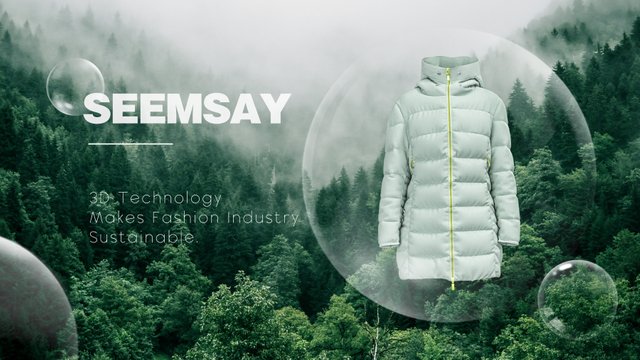3D Clothing Technology Holds The Key To A Sustainable Fashion Industry

The fashion industry generated millions of tonnes of fabric wastes and green-house gas emissions each year. 3D technology can play a strong role in solving the fashion waste problem.
The clothing industry accounts for 2.1 billion tonnes of greenhouse-gas emissions each year, more than the entire economies of France, Germany and UK combined together. Tonnes of fabric are wasted during the early pattern making and sampling process. In respect to the serious waste problem, there is urgent needs for apparel companies to transform their design and product development model.
Advanced technologies, especially 3D clothing technology, gifted fashion brands a groundbreaking opportunity to innovate their business model and discover a new path to a sustainable future, by challenging the traditional garment development and manufacturing processes in all aspects, from pattern making, sampling and prototyping, to merchandising.
· Garment Development
With the use of 3D technology, pollution created at the initial garment development stage can be dramatically reduced. According to the report of Pulse of the Fashion Industry 2017, around 35% of the raw materials in the value chain have been wasted. In traditional garment development process, an average of four to five physical samples are created before the brands confirm the desired product. As those samples are semi-finished or inaccurate, the ending of them is usually being burned or thrown away in landfill. Different from the time-consuming and environment-damaging sampling process, 3D clothing prototyping eliminates sample wastes in the pre-manufacturing phase.
3D fashion design software and digital clothing solution providers enable designers to create 3D pattern, apply trims and decorative details, and change fabric of garments on the digital clothing models. One such 3D clothing solution provider is Seemsay, which allows designers to create photo-realistic image of the finished garments, and check the fit, fabrics & trims and silhouette of clothes digitally. All edits and modifications on the samples, change of textiles & accessories can be done virtually without cutting any fabrics or generating any waste.
· Material Sourcing
Traditional material sourcing usually requires fabric suppliers to deliver swatch books to fashion brands, who eventually discard those discontinued books. Due to their insignificant size, the swatches are hard to be reused or recycled. It is difficult to calculate the fabric wasted during the material sourcing phase as apparel companies don’t record the waste volume for fear of being criticized, which indirectly proves that the volume of swatches wasted are huge.
By developing digital materials, 3D clothing technology allows fabric and trim suppliers to showcase samples digitally and reduce material waste. This is where Seemsay 3D digital clothing service platform becomes essential. In its built-in fabric library, textiles are presented digitally with 3D technology reproducing its physical properties and performance to simulate its behaviors and drape, which gives designers a full picture of fabric’s features to judge its fit and look on real human bodies. And in its trim library, garment accessories, including buttons, zipper pullers, buckles, etc., can be observed from any perspective. Through 3D visualization, material sourcing can be a zero-waste practice.
· Product Sales
According to the fashion sustainability researcher Hasmik Matevosyan, up to 30% of produced garments are never being sold and another 30% have to be sold with a markdown. 3D clothing technology can contribute to significant reduction in inventory and returns.
Digital clothing technology means quicker time to market and faster garment development, which leaves more time for designers to work on optimizing the styles. Through being displayed on e-commerce platforms to replace photos of physical garments, photo-realistic 3D image of garments can also be used in product merchandising. The impact of using 3D virtual image instead of real clothes photos on online shops is more than saving brands the trouble of photo shooting. With the help of 3D body digital modelling, consumers can try digital clothes virtually on his/her own digital figure to check the fit of garments. The 3D clothing technology, actually, transforms the current clothes sales model from the manufacturing-selling process to a on-demand process where consumers browse 3D virtual clothes online, place orders and pay deposit, then brands arrange manufacturing according to the order volume. The new digital process eases capital pressures of brands, decrease returns and reduce wastes from overproduction.

3D fashion design and solution companies like Clo3D, Browzwear and Seemsay help brands to speed up their product development process, streamline their supply chain and upgrade their sales model. Additionally, the 3D virtualization technology offers fashion brands a feasible way towards sustainability by reducing material wastes and minimize returns.